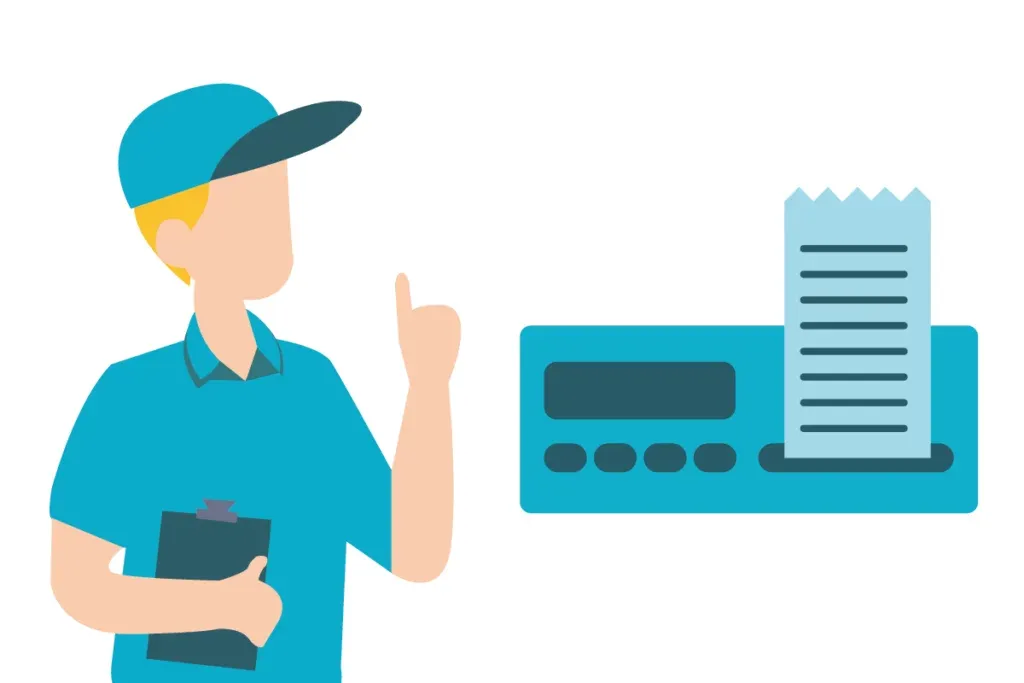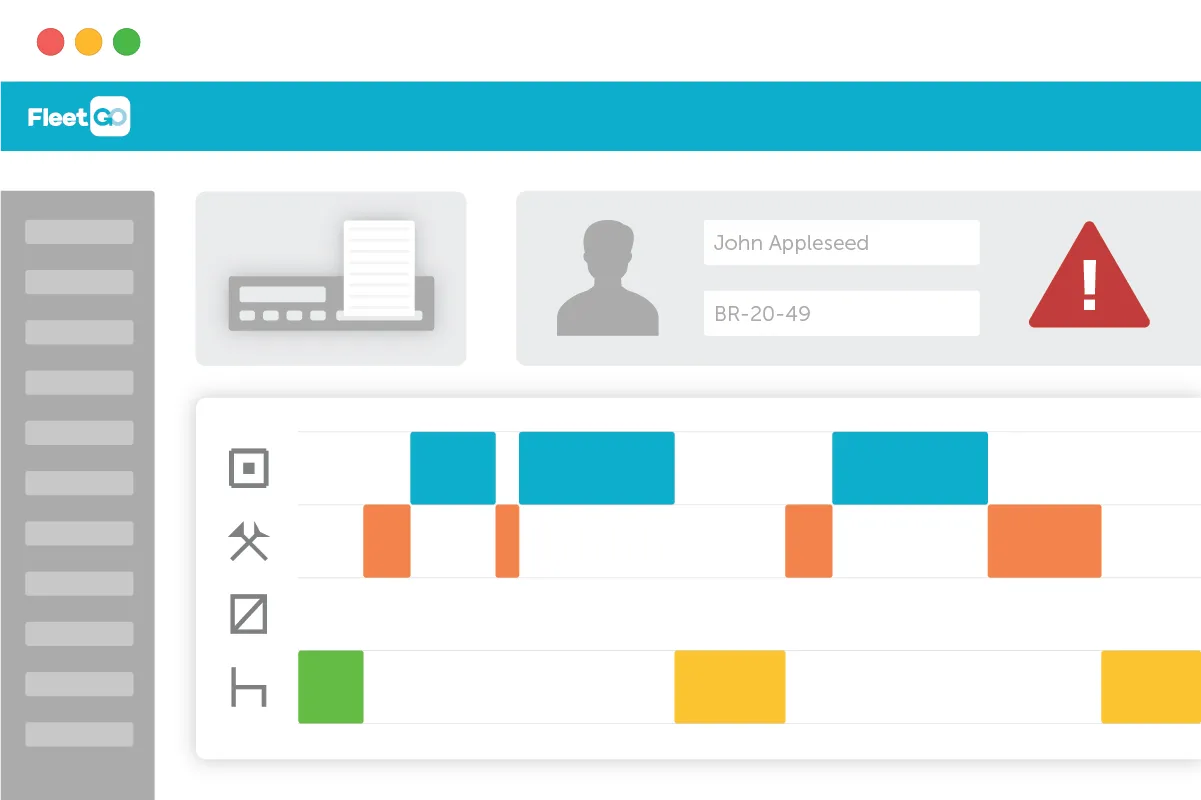Almost 70% of all tachograph infringements are due to wrong operation of the tachograph. So with a proper instruction and understanding of common situations, drivers can reduce their risks on fines dramatically. The most important button is the ‘mode’ or ‘mode switch’ button to correctly set the tachograph to record the applicable activities.

Tachograph symbols

Driving Symbol:
Set when the vehicle is in motion (automatically set by tachograph).

Break Symbol or Rest Period Symbol:
Break of work. Drivers may not carry out any work or other driving when this mode is set.

Available Symbol:
Waiting time eg. waiting on a ferry, waiting on others to load/unload the vehicle, or being the co-driver that is not working in any way (like navigating or other tasks).

Other work Symbol:
All work activities other than driving, for the same or another employer, regardless of sector.
For more detailed information about tachograph modes and symbols, read this article.
Never risk any tachograph fines again!
Get started with analysing your tachograph files with the FleetGO all-in-one tacho solution. Never miss an infringement again!
Chances of getting invested are higher than ever!

Tachograph Misfunctioning/misuse
If the tachograph does not function properly or if the driver fails to operate the tachograph correctly, it’s highly recommended that the driver keeps a manual record to this effect. With a digital tachograph, the driver can make (and sign!) a manual printout for the period covering the error with a clear explanation what happened. Users of an analogue tachograph should use the back of the tachograph chart to do the same.
Double Manning
A vehicle is considered to be double-manned if, at any driving period, in between two daily or a daily and weekly rest period, the vehicle has two drivers on board (who are able to drive and have a tachograph card). The first hour of this driving time is optional, which means it is possible to pick up the second driver within one hour after the shift has started. In general, the same tachograph rules apply to both drivers, except for the daily rest rules. If double-manned, each driver must have a daily rest period of 9 hours within a 30-hour period that starts after the last daily or weekly rest period has ended.
Most digital tachographs will automatically set the mode for the second driver on ‘availability’. The second driver is not allowed to set the mode on his card to ‘break/rest’. Provided the second driver is not required to carry out any work during this time, enforcement authorities will accept the first 45 minutes of this time as a break from driving*. Any periods of other work, however, must be manually recorded on a printout or chart by the driver.
Read our detailed article about double manning here.
* Local rules may apply on a country basis.
Traveling Time
When the vehicle is not at the (standard) employers location or the home address of the driver, the time the driver spends to get to this location, cannot be counted as rest or break. No matter which mode or transport is used. The only exception is when the driver is on a ferry or train whit access (and use!) of a bunk or couchette. Traveling must always be recorded as ‘other work’ or ‘availability’.
Recording Other Work
‘Other work’ means all activities which are defined as working time in Article 3(a) of Directive 2002/15/EC, except for ‘driving’. It includes all work for the same, or another employer, regardless of sector.
In a week when in-scope driving activities take place, all previous ‘other work’ since the last rest period (daily or weekly rest), should be manually recorded in the tachograph. Drivers can input their working history up to 28 days before. Other options to record this are:
- Manually written and signed on chart (analogue tacho)
- Manually written and signed on printout (digital tacho)
Mixed use of digital and analogue tachograph
When a driver uses both digital and analogue tachographs, he needs to make sure that all data is recorded properly. This means using a driver card to record the data on the card when using a digital tachograph and using an analog chart when using the analogue tacho and keep them together.
Any time away from the vehicle should be recorded on one place; the digital card (using the manual input) OR the chart (using the back of the chart). It’s not necessary to record it on both.
Work for multiple transport companies
When a driver works for multiple transport companies, the driver must provide each company with all necessary information to make sure that both driver and company meet all rules and regulations.
Disclaimer
This content is provided for informational purposes only and is not meant to be an endorsement or representation by FleetGO.com or any other party. This information may contain inaccuracies or typographical errors, despite our efforts to ensure accuracy. FleetGO.com accepts no responsibility or liability for any errors or omissions, and is not responsible for the contents of any linked website or any link contained in a linked website. Please refer to our full disclaimer for more details.


